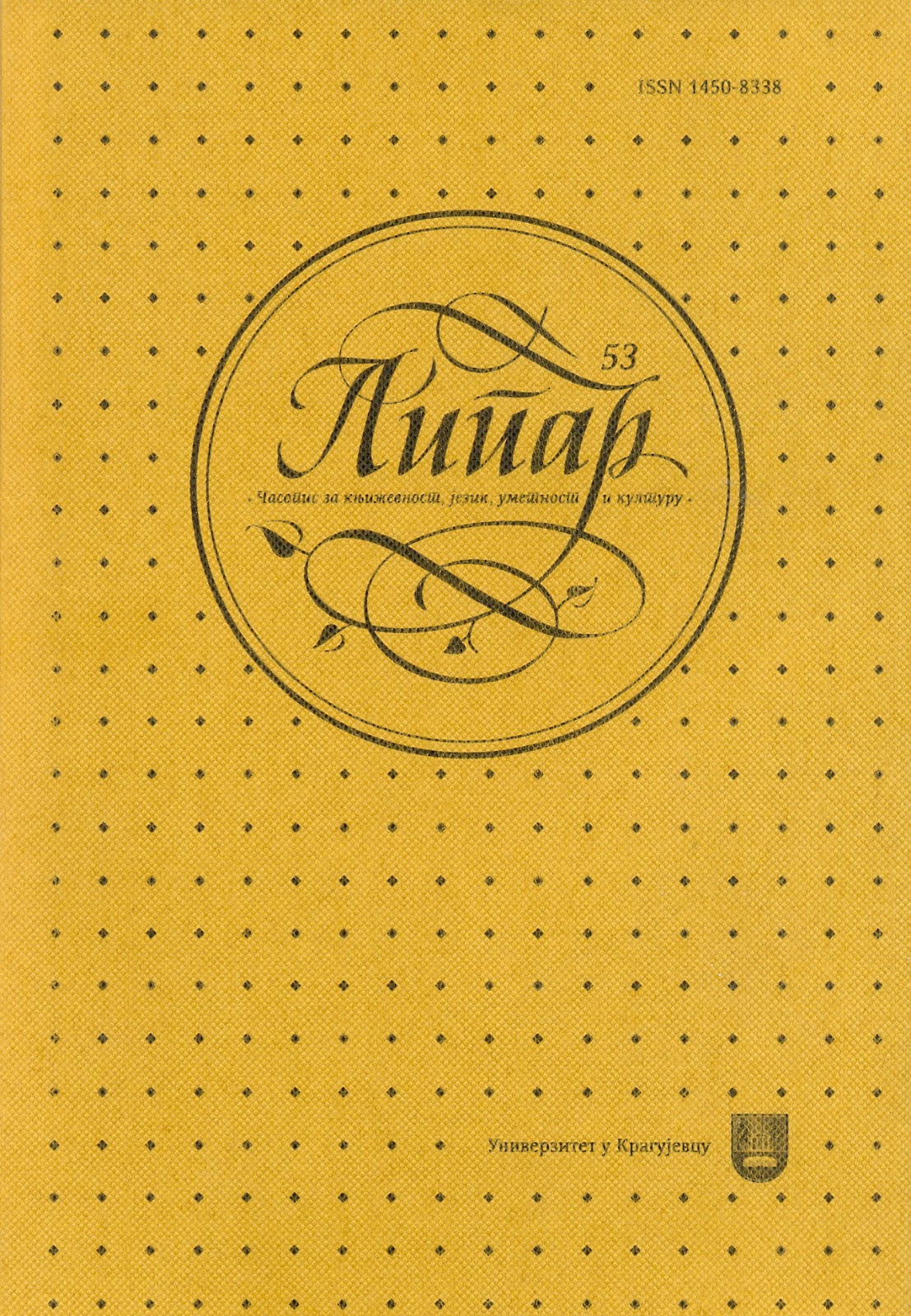ЕЈЗЕНШТАЈН У ПОДЗЕМЉУ
Eisenstein in Underworld
Author(s): Violeta V. StojmenovićSubject(s): Language and Literature Studies, Fine Arts / Performing Arts, Studies of Literature, Other Language Literature, Film / Cinema / Cinematography, Philology
Published by: Универзитет у Крагујевцу
Keywords: editing;montage; montage of attraction; typage;dialectics
Summary/Abstract: The paper aims to analyze and interpret DeLillo’s usage of the biography and creative work of Russian theater and film director Sergei Eisenstein, as a source of materials and motifs, themes, compositional, stylistic and structural devices in the novel Underground, and to show some of the reasons DeLillo might have had for assimilating Eisenstein life and work in the world of the novel. As an artist whose relationships with politics and state were constantly oscillating between complicity and antagonism due to his avant-gardism, strenuous quest for ever newer artistic devices and his intellectually very demanding movies, grounded on the concept of dialectical montage thinking, which have to transform, immediately and even violently, recipient’s state of mind and value system, Eisenstein is a provocative model in an age of capitalistic co-optation and commodification of art works and art strategies. Recognition of Eisenstein’s “presence” on various narrative levels, e. g. on the diegetic, metadiegetic, metanarrative and ideological level, is of the prime interest of this paper. For example, Eisenstein’s asking for a glass of milk in Ester’s recollection could be a reference to General Line with its elaborate milk symbolism. Hints at Eisenstein’s bi-sex (Nesbet 2003: 15) should be connected with allusions to T. S. Eliot’s hermaphroditic omniscient Tiresias in order to make visible the image of the artist as seer. The “underground” story about orange juice might be read as an allusion to the repetitive squeezing of lemon in Strike, and so on. Special attention is given to Eisenstein’s theories of associative, intellectual, polyphonic and vertical montage and montage of attraction and how they have been understood, modified and applied in DeLillo’s narrative. Comparing Eisenstein theories and some examples of concrete usage of various montage technique in his motion pictures with DeLillo’s webs of associations constructed from “floating motifs” (Nesbet 2003: 205- 206) and leitmotifs, polysemy of his intermingled micro-narratives and his versions of collisions and crash of meanings proves to be very illuminating. Both authors tend to break up with linearity and unity of plot, to fragmentize narrative into divergent, multilayer pieces, to interpolate many “extra-thematic images” (Eisenstein 1976:10) in similar ways. Also, Underworld could be perceived as an actualization of Eisenstein’s idea of a “serape-film” planned to be filmed in Mexico. The ideological effects of such storytelling strategies are seen in DeLillo’s subversive and questioning attitudes toward official presentations of the Cold War, its history and the ordinary lives of different classes during and after it. The paper demonstrates genetic, intertextual and intermedial aspects of DeLillo’s relationship to Eisenstein, emphasizing parallels and correspondences between DeLillo’s Underworld and Eisenstein’s Ivan the Terrible, Que Viva Mexico! and “Notes for a Film of ‘Capital’”.
Journal: Липар - часопис за књижевност, језик, уметност и културу
- Issue Year: XV/2014
- Issue No: 53
- Page Range: 65-85
- Page Count: 21
- Language: Serbian

